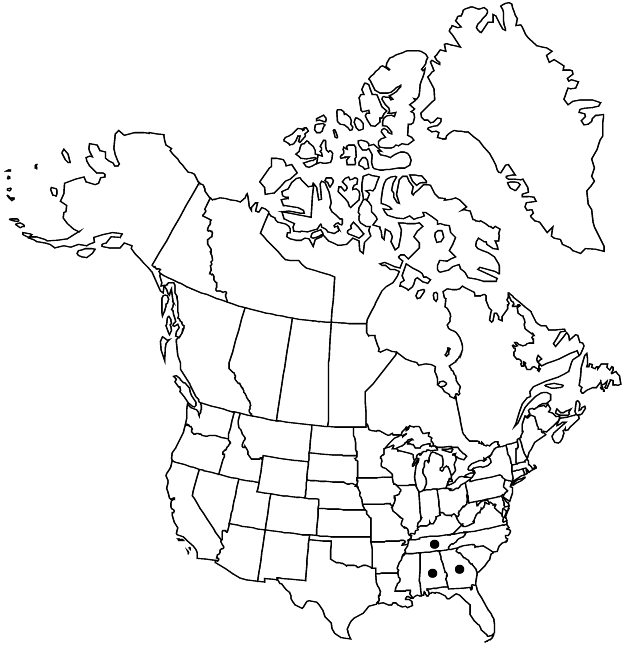Sedum nevii
Mem. Amer. Acad. Arts, n. s. 6: 373. 1858,.
Herbs, perennial, tufted, glabrous. Stems decumbent, branched, bearing terminal rosettes (primary rosettes usually 1 cm diam.). Leaves alternate, spreading, petiolate; blade green or grayish green, not glaucous, narrowly rhombic-elliptic, oblanceolate, or spatulate, sub-terete, 6–11 × 2.5–3.2 mm, base with simple, short spur, not scarious, apex rounded, (surfaces papillose marginally). Flowering shoots erect or pendent, simple, 6–8.5 cm; leaf blades narrowly elliptic or linear, (8.5–18 × 0.7–5.4 mm), base short-spurred; offsets not formed. Inflorescences cymes, 5–30-flowered, 3-branched; branches not recurved, sometimes dichotomously forked; bracts similar to leaves, smaller. Pedicels absent or to 0.5 mm. Flowers 4-merous; sepals spreading, slightly connate basally, green, linear or linear-lanceolate, unequal, 3–8.5 × 0.5–2 mm, apex obtuse; petals spreading, distinct, white, lanceolate, carinate, 3.5–7 mm, apex acute; filaments white; anthers red; nectar scales white, subquadrate or square. Carpels stellate in fruit, distinct, brown. 2n = 12.
Phenology: Flowering spring.
Habitat: On living mats of mosses and lichens on rocks of quartzite and gneiss, crevices and ledges of cliffs, sometimes talus
Elevation: 1000 m
Distribution

Ala., Ga., Tenn.
Discussion
Sedum nevii has conspicuous lips along the adaxial suture of mature follicles. R. T. Clausen (1975) considered it to be closely related to S. glaucophyllum and possibly conspecific with it; S. nevii has narrower leaves and is not glaucous. Flavonoid chemistry and seed coat morphology support recognizing S. nevii and S. glaucophyllum as separate species (P. J. Calie 1981).
Selected References
None.